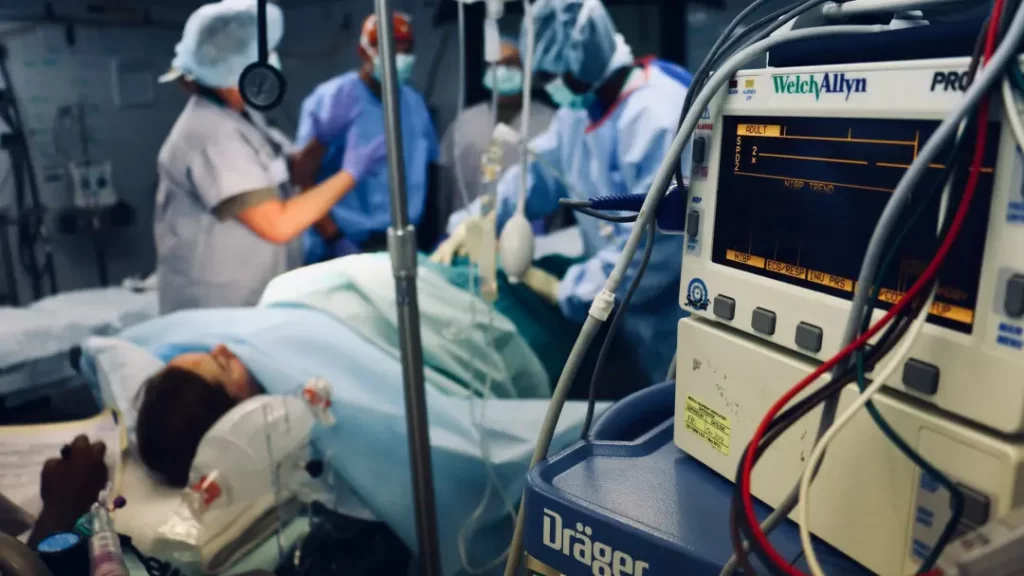Anal cancer occurs in the anal canal which is considered an uncommon type of cancer. The anal canal is a short tube that is found at the end of your rectum from where stool leaves your body.
Anal cancer can cause various signs and symptoms. Some of the common anal cancer symptoms include anal pain and rectal bleeding.
Most people with anal cancer get a combined treatment of chemotherapy and radiation after early anal cancer symptoms are detected. It may increase the chances of cure, but at the same time, the combined treatments may also increase the chances of multiple side effects.
5 Anal Cancer Symptoms
The early anal cancer symptoms are:
- Severe bleeding from the rectum or anus
- Pain in the anal area
- Growth, mass or lump in the anal canal
- Itching in the anal area
- Diarrhoea or Constipation
Anal Cancer Risk Factors
- Smoking cigarettes may lead to an increased risk of anal cancer.
- Older age. Most cases of anal cancer are prone to occur among people who are age 50 and above.
- Many sexual partners. People who have more sexual partners in their lifetime are prone for a greater risk of anal cancer.
- Anal sex. People who are engaged in receptive anal sex get a higher risk of anal cancer.
- History of cancer. If anyone have a cervical, vulvar or vaginal cancer then there are more chances of risk of developing an anal cancer.
- Human Papillomavirus (HPV). HPV infection increases your risk of several types of cancers, which includes the anal cancer and cervical cancer. HPV infection is a sexually transmitted infection which causes genital warts at times.
- People who intake drugs can suppress their immune systems by immunosuppressive drugs.
- People who have received organ transplants are also at an increased risk of anal cancer.
- HIV virus that causes AIDS can also suppress the immune system leading to an increased risk of anal cancer.
Diagnosis of Anal Cancer
The following tests and procedures may be used if the patient has any early anal cancer symptoms:
- Physical exam : This is done to check the general signs of health, like the lumps or abnormalities like the patient history, the health habits, past illnesses and treatments.
- Digital rectal examination (DRE): The lubricated, gloved finger is inserted by the doctor into the lower part of the anus or rectum by which he/she can feel the lumps or anything that seems unusual.
- Anoscope: An exam of the lower rectum and anus using a short, lighted tube called an anoscope.
- Proctoscopy: A procedure to check the interiors of the rectum and anus using a proctoscope. It may also have a tool to take our the tissue samples.
- Endo-anal or endorectal ultrasound: An ultrasound transducer is inserted into the anus or rectum for echoes which in turn form a picture of body tissues called a sonogram.
- Biopsy: The cells or tissues are removed and later it can be viewed using a microscope to check for signs of cancer. In case of abnormality, a biopsy may be done at the same time.
The treatment options after detecting the early anal cancer symptoms depend on the following:
- The stage of the cancer.
- Tumour in the anus or rectum
- HIV disease
Stages of Anal Cancer
After early anal cancer symptoms have been diagnosed, certain tests are taken to find out if cancer cells have spread to other parts of the body which is called staging. This further helps to determine the stage of the disease to plan for the anal cancer treatment. The following tests used in the staging process:
- CT scan: A detailed picture of areas inside the body, such as the abdomen, chest, pelvis, are taken from different angles. The pictures taken are linked to an x-ray machine.
- Chest x-ray: An x-ray is a type of energy beam that can go through the body like the bones or other organs making a picture of areas inside the body.
- MRI scan: A procedure made to get series of detailed pictures of areas inside the body to detect abnormalities.
- PET scan: A procedure where malignant tumour cells which are brighter are detected in the body with a small amount of radioactive glucose injected into a vein.
- Pelvic exam: An exam of the cervix, vagina, uterus, ovaries, fallopian tubes, and rectum where a speculum is inserted into the vagina and cervix for signs of disease.

Stages of anal cancer:
The stages of anal cancer are divided into four after diagnosing the early anal cancer symptoms. They include:
Stage 0
In stage 0, abnormal cells are detected in the innermost layer of the anus which can become cancerous and spread into nearby normal tissue.
Stage I
In stage I, cancer will have formed and the tumour will be of 2 centimetres or smaller.
Stage II
Stage II anal cancer is categorized into stages IIA and IIB.
- The tumour is larger than 2 centimetres in stage IIA but not larger than 5 centimetres.
- The tumour is larger than 5 centimetres in stage IIB.
Stage III
Stage III anal cancer is categorized into stages IIIA, IIIB, and IIIC.
- The tumour is 5 centimetres or smaller in stage IIIA, and it spreads to lymph nodes which is near the anus or groin.
- The tumour is any size and spreads to nearby organs in stage IIIB but does not spread to lymph nodes.
- The tumour is any size and spreads to nearby organs in stage IIIC but it spreads to lymph nodes near the anus or groin.
Stage IV
In stage IV, the tumour can be of any size which can spread to lymph nodes or nearby organs and other parts of the body, such as the lungs or liver.
Anal cancer can recur after it has been detected with the early anal cancer symptoms and treated.
Types of Anal Cancer
Anal cancers are frequently partitioned into 2 gatherings in view of where they start:
cancers of the anal canal trench (over the anal verge)
cancers of the perianal skin (beneath the anal verge) – recently called malignant growths of the butt-centric edge
Causes
Anal cancer forms when a genetic mutation turns normal, healthy cells into abnormal cells. Healthy cells grow and multiply at a set rate, eventually dying at a set time. Abnormal cells grow and multiply out of control, and they don’t die. The accumulating abnormal cells form a mass (tumor).
Anal Cancer Prevention
- Practice safer sex
- Get vaccinated against HPV
- Stop smoking
- Early detection is key to beating cancer!
To get an opinion on the anal cancer symptoms, get an appointment today.
Read also Foods for Cancer Patients.
